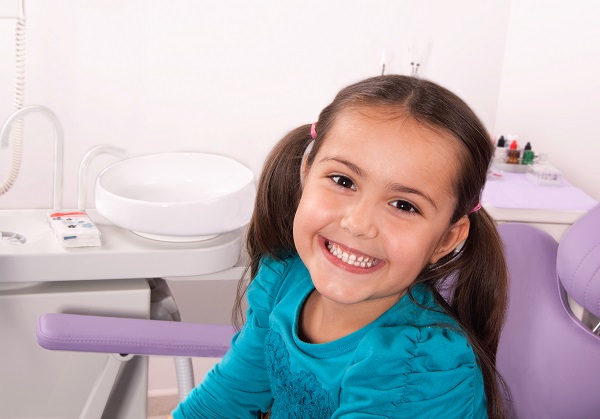Dental Bonding or a Dental Veneer for Your Child’s Chipped Tooth?

Children are often more susceptible to chipped teeth than adults due to their more active lifestyle and all too often their reckless behavior. From playground accidents to a blow to the face during a sporting event, it is helpful for parents to understand what their options are if (and when) their child chips a tooth, which includes dental bonding and dental veneers treatment.
How to choose between dental bonding or dental veneer
Two of the most common solutions for treating a chipped tooth in children are dental bonding and a dental veneer. Both solutions are safe and produce quality results. However, one may be preferable to another depending on a range of factors, such as the age of the child, the parent’s preference, and the severity of the damage.
Dental bonding for your child’s chipped tooth
Dental bonding is a form of adhesive dentistry in which a composite resin material is bonded to the visible surface of teeth. The resin material offers notable benefits. Notably, the material is tooth-colored and strong enough to withstand the daily pressures that front teeth receive. It also does not require the removal of any teeth enamel, and the process is minimally invasive and safe.
Dental veneers for your child’s chipped tooth
Dental veneers, also called porcelain veneers, are a form of restorative and cosmetic dentistry that involves the application of a tooth-colored layer of porcelain material over the visible surface of a damaged tooth. Dental veneers are often compared with dental bonding since they are used to treat similar concerns such as a child’s chipped tooth. However, dental veneers are often less recommended for children and teenagers since the procedure may require the removal of dental enamel. This makes dental veneers more of a permanent solution.
Choosing between dental bonding and a dental veneer
Ultimately, a dentist will need to examine the child’s mouth to determine which option is most appropriate. The location of the tooth, the severity of the damage, the age of the patient, and the parent’s treatment preference may also play a role. However, dental bonding is often recommended more than dental veneers for minor to moderate instances of chipped teeth in children.
How to help your child prevent a chipped tooth
Of course, the best way to deal with a child’s chipped tooth is by preventing it from occurring in the first place. While accidents are bound to occur, parents can help their children prevent chipped teeth by encouraging them to play carefully and wear a mouthguard during sports and other physical activities. Parents can also teach children the importance of not biting down hard on hard candies, ice, etc.
Schedule a restorative dentistry consultation today
The best way to determine if dental bonding, a dental veneer, or another restorative treatment solution is most appropriate for your child’s chipped tooth is to contact our kid-friendly dental team today. We take pride in making the often stressful process of treating chipped teeth less stressful and more convenient for our patients. So why wait? Reach out today to start the process.
Request an appointment here: https://familychoicedentistry.com or call Family Choice Dental at (505) 634-5657 for an appointment in our Albuquerque office.
Check out what others are saying about our dental services on Yelp: Dental Bonding in Albuquerque, NM.
Related Posts
Dental bonding is a popular cosmetic option used to fix chipped, stained, or uneven teeth. However, cosmetic and general dentists often offer an alternative option in the form of veneers to improve the shape and color of the teeth. While both options help create a more aesthetically pleasing smile, they are different in important key…
Dental bonding is a treatment that can help correct imperfections in your smile. Dentists often recommend this procedure for chips, cracks, and even gaps between the teeth. However, this procedure does not work for all dental issues. This article covers situations where dental bonding would be the right treatment.Dental bonding involves the application of a…
Dental bonding, also known as tooth bonding, is a popular procedure that is used for a variety of reasons. Bonding can be used to cover up a myriad of imperfections, such as chips, cracks, gaps, and discolorations, and it is also used to fill in cavities. Dental bonding is popular because it uses a tooth-colored…
Dental bonding is one of the most versatile and affordable treatments used in dentistry. It can be used to fix a wide range of issues like damaged, cracked, chipped, or decayed teeth. The procedure involves using composite resin to rebuild and restore damaged teeth. These restorations typically last up to eight years depending on your…
